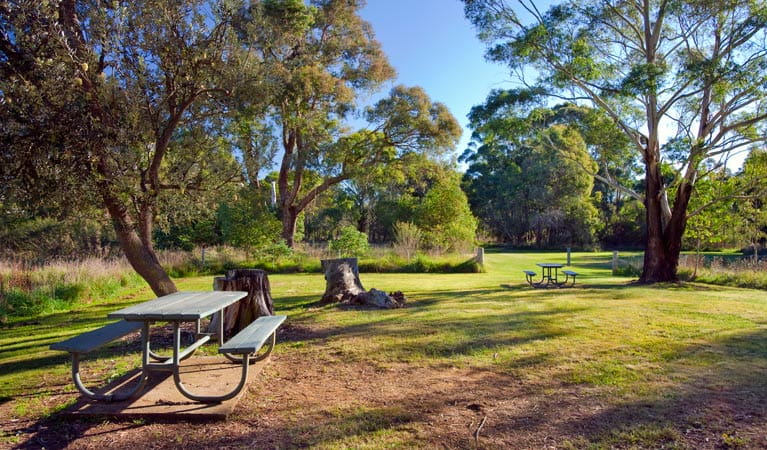Cecil Hoskins picnic area
Cecil Hoskins Nature Reserve
Overview
Cecil Hoskins picnic area, near Moss Vale, is located beside Wingecarribee River in Cecil Hoskins Nature Reserve. It’s an ideal spot for birdwatching, picnicking and having a barbecue.
- Type
- Picnic areas
- Where
- Cecil Hoskins Nature Reserve in Country NSW
- Accessibility
- Medium
- Please note
- Remember to take your binoculars if you want to go bird watching.
Great things come in small packages and this little picnic area beside Wingecarribee River is no exception to that rule.
Bring along the family and your picnic supplies and set up for a few relaxing hours in this tranquil wetland setting. You could even bring your own gas stove and enjoy a barbecue. After a hot day, it’s a great place for picnicking in the evening.
Feel free to wander the area, taking binoculars with you for some birdwatching as you try to spot the many species of woodland birds and waterbirds. See if you can also find the two rare old Paddys River box trees. They’ve been around much longer than us.
If you want to explore a bit further, Wingecarribee River walking track begins and ends at the picnic area. This walking track loops you through regenerating forest on Wingecarribee floodplain.
Map
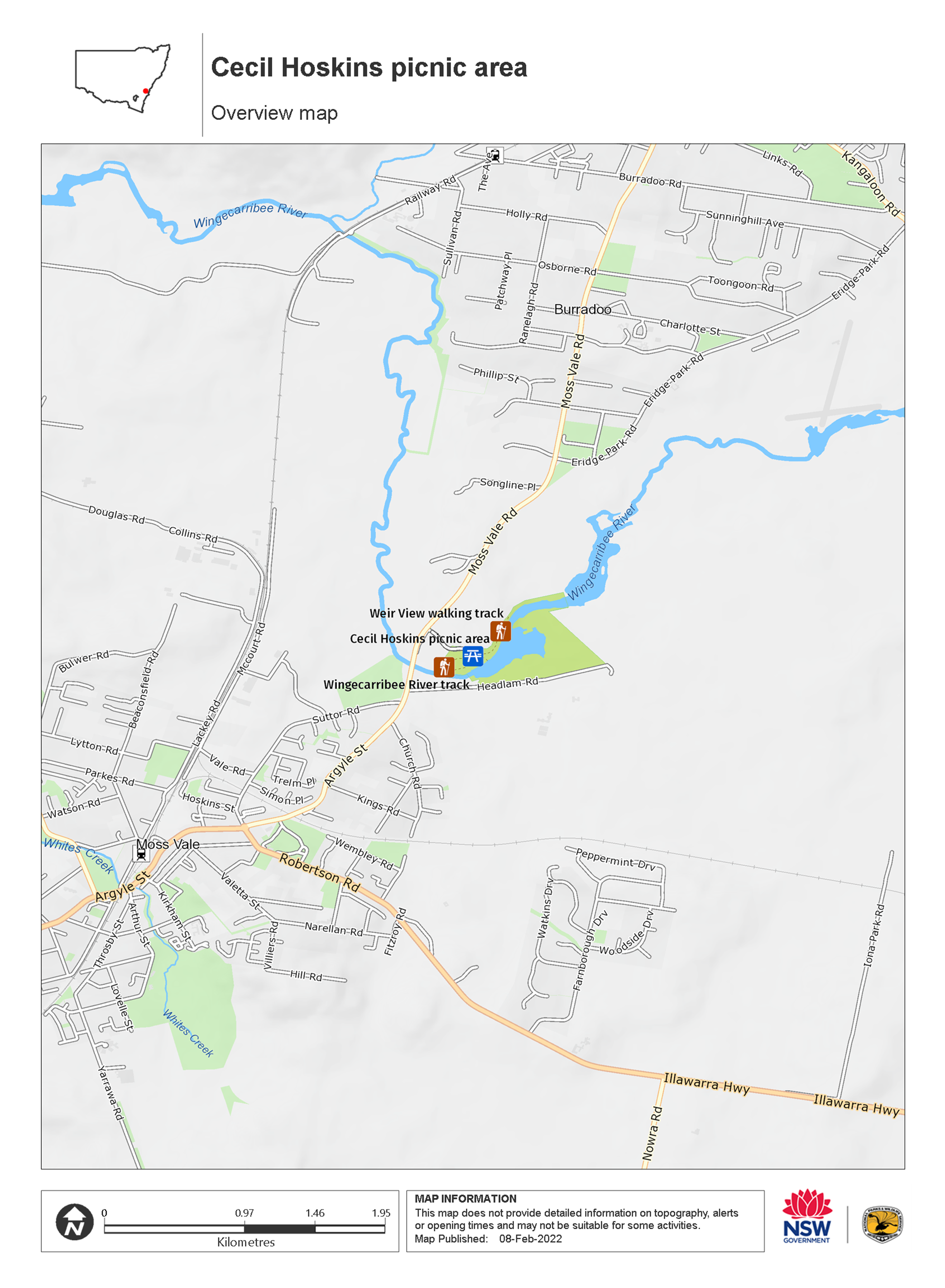
Map legend

Local alerts
For the latest updates on fires, closures and other alerts in this area, see https://www.nationalparks.nsw.gov.au/things-to-do/picnic-areas/cecil-hoskins-picnic-area/local-alerts
General enquiries
- National Parks Contact Centre
- 7am to 7pm daily
- 1300 072 757 (13000 PARKS) for the cost of a local call within Australia excluding mobiles
- parks.info@environment.nsw.gov.au
Park info
- in Cecil Hoskins Nature Reserve in the Country NSW region
Cecil Hoskins Nature Reserve is always open but may have to close at times due to poor weather or fire danger.
Visitor info
All the practical information you need to know about the Cecil Hoskins picnic area.
Getting there and parking
On entering Cecil Hoskins Nature Reserve:
- The picnic area will be adjacent to the carpark
Road quality
- Unsealed roads
Vehicle access
- 2WD vehicles (no long vehicle access)
Weather restrictions
- All weather
Parking
Parking is available nearby Cecil Hoskins picnic area.
Best times to visit
There are lots of great things waiting for you in Cecil Hoskins Nature Reserve. Here are some of the highlights.
Autumn
When the weather is milder, hike from the reserve to Bong Bong.
Spring
Bring your binoculars for a spot of birdwatching and look for migratory bird species that stop over to feed and rest in the reserve.
Summer
Enjoy a summer evening picnic and listen to birdcalls. By the time the sun goes down, they'll be in competition with the frogs.
Weather, temperature and rainfall
Summer temperature
Average
12°C and 25.3°C
Highest recorded
38.8°C
Winter temperature
Average
1.8°C and 12.5°C
Lowest recorded
-6.4°C
Rainfall
Wettest month
June
Driest month
September
The area’s highest recorded rainfall in one day
333mm
Facilities
- You’ll need to bring your own cooking and drinking water
- Wood fires are not permitted, but you’re encouraged to bring gas or fuel stoves.
Toilets
- Non-flush toilets
Picnic tables
Carpark
Maps and downloads
Accessibility
Disability access level - medium
Assistance may be required to access this area.
Prohibited
Pets
Pets and domestic animals (other than certified assistance animals) are not permitted. Find out which regional parks allow dog walking and see the pets in parks policy for more information.
Smoking
NSW national parks are no smoking areas.
Learn more
Cecil Hoskins picnic area is in Cecil Hoskins Nature Reserve. Here are just some of the reasons why this park is special:
Aboriginal culture
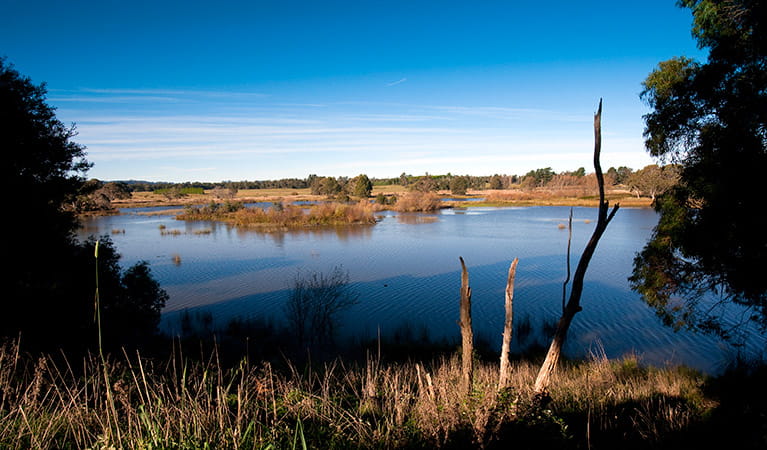
The reserve lies within the traditional land of the Bong Bong people. Cultural, linguistic and spiritual knowledge associated with this area continues to be passed on today. NPWS works in collaboration with local Aboriginal communities to protect this rich heritage.
The weir and the wherefore
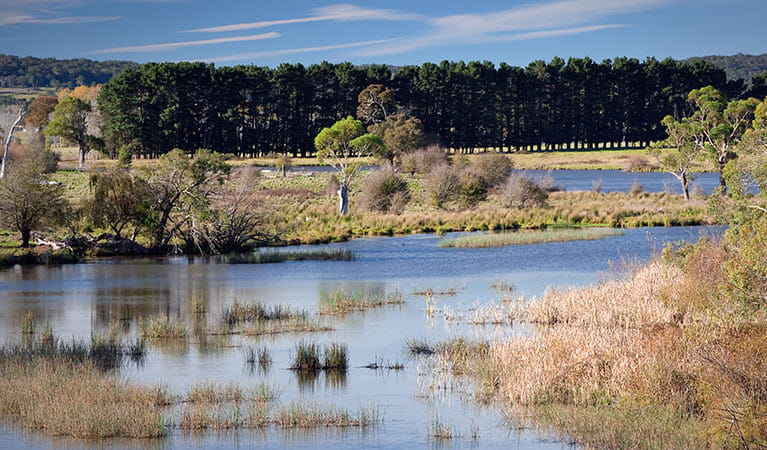
Bong Bong weir was built in the 1920s to create a water supply for Moss Vale. The lagoon and swamp areas, which developed as a result of this weir, were declared a wildlife sanctuary in 1932. During the 1965-8 drought, Wingecarribee Council considered destroying the weir to allow water to be released for Berrima Cement Works, situated downstream. This proposal was so strongly opposed by the local community, however, that the idea was abandoned. The reserve supports stands of Paddys River box, native to the Moss Vale district and south of Jenolan, as well as snow gum banksia and a range of other native species. The lagoon itself is deep enough for large aquatic plants to thrive, such as tall spikerush, ribbonweed, yellow bladderwort and water milfoil. Other aquatic species include water snowflake, starwort, water primrose, river buttercup and nardoo.
- Weir View walking track Weir view walking track at Cecil Hoskins Nature Reserve is a short easy walk along the southern bank of the lagoon with scenic views and great birdwatching opportunities near Moss Vale.
- Wingecarribee River walking track Wingecarribee River walking track is a short easy walk from Cecil Hoskins picnic area, near Moss Vale. Enjoy scenic river views and birdwatching opportunities in Cecil Hoskins Nature Reserve.
Wetland creatures
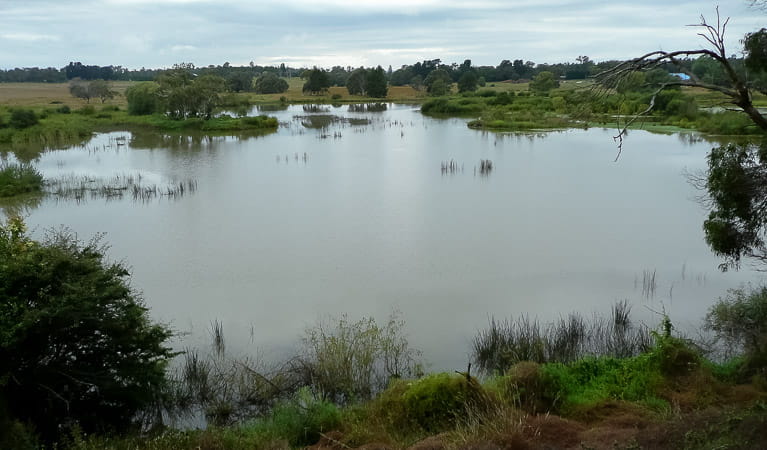
Over 90 bird species inhabit the reserve and around one third of these, including pacific black ducks, black swans, dusky moorhens and grey teals, are waterbirds that are dependent on the lagoon. So if you're keen on bird watching, be sure to bring your binoculars along. Platypus and kangaroos also make their homes in and around the lagoon. The reserve also supports stands of Paddys River box, native to the Moss Vale district and south of Jenolan, as well as snow gum banksia and a range of other native species. The lagoon itself is deep enough for large aquatic plants to thrive, such as tall spikerush, ribbonweed, yellow bladderwort and water milfoil. Other aquatic species include water snowflake, starwort, water primrose, river buttercup and nardoo.
- Weir View walking track Weir view walking track at Cecil Hoskins Nature Reserve is a short easy walk along the southern bank of the lagoon with scenic views and great birdwatching opportunities near Moss Vale.
- Wingecarribee River walking track Wingecarribee River walking track is a short easy walk from Cecil Hoskins picnic area, near Moss Vale. Enjoy scenic river views and birdwatching opportunities in Cecil Hoskins Nature Reserve.
Who was Cecil Hoskins?
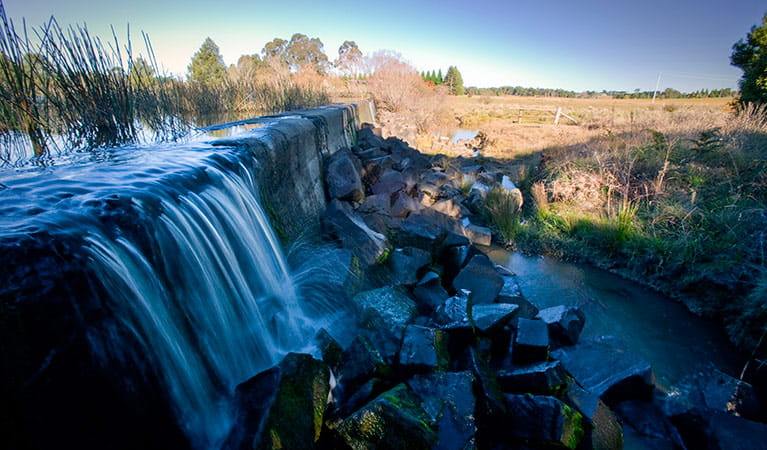
When the reserve was gazetted in 1975, it was named after Sir Cecil Hoskins. This man was a local resident for 40 years who not only had a keen interest in creating parks and gardens, but also contributed to the purchase of the land for the reserve.

